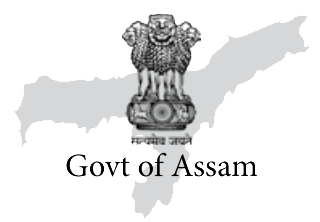A silent revolution is weaving in rural Assam. Some 35 km west of Assam capital city of Guwahati is Sualkuchi in Kamrup district. It is on the northern bank of the Brahmaputra River. A silk town, it is also known as ‘Manchester of Assam’. The greater Sualkuchi area is famous for its centuries-old heritage of weaving.
Weaving is not just a tradition handed down by generations, but a way of life and a labour of love in Assam. Most of the families of Sualkuchi have hand-operated looms, which they call taatxaal. The handwoven Muga and Pat silk cloth in traditional looms in Sulakuchi is known for its high quality.
Dipa Kakati (45), a resident of Sonari Para in Sualkuchi village, has been enthusiastically weaving silk gamochas for well over three months now. She is keen to deposit as many of them at a procurement centre set up by Directorate of Handloom and Textile at her native village under the Swanirbhar Nari Scheme of the Government of Assam.

This Scheme is an endeavour by the Government to empower indigenous weavers of the State, and to provide financial support to the weavers’ families. It is being implemented through the Directorate of Handloom & Textiles, Assam. The Department has set up procurement centres under the scheme.
“The Department has procured 40 such gamochas from me. I meet the benchmark set by the Department. They deposited money in my bank account three days after the procurement. I got ₹ 53,000. The standard price of these Gamochas has been fixed at ₹ 1,325 per piece,” says Dipa.
Under the Scheme, traditional hand-woven items are to be procured directly from the indigenous weavers without involving any middlemen.
“I have reached the upper limit of supplying 100 Gamochas under the scheme. I got ₹ 1,32,500 within three days of selling my product,”
Nilima Devi
Nilima Devi (34) of Mati Parbat area under Greater Sualkuchi is another happy weaver. She sold 100 gamochas. “I have reached the upper limit of supplying 100 Gamochas under the scheme. I got ₹ 1,32,500 within three days of selling my product,” she tells Asom Barta. “Previously, we used to get ₹ 1,000 from the middlemen who would buy from us. Now, no one is selling them.” Nilima is now keen to invest the money in expanding her handloom business.
The centre in Sualkuchi is one of the five procurement centres set up by the Department in Kamrup district, which has the distinction of having the highest number of weavers in a district in the State.
“In our procurement centre, we have registered 4,886 weavers under Swanirbhar Naari scheme. We have purchased 2,627 handloom products under the schemes from these centres,” says Pinky Baishya, an inspector in the Department.

The scenario in Salbari in Baksa in the Bodoland Territorial Region is rosy as well.
Jelina Goyari (36) and Angima Basumatary (43) are residents of Kahibari village adjacent to the Manas National Park in Baksa district. They have travelled 17 km to the Salbari-based office of the Department to deposit their products.
Like them, over hundred other weavers of the district have deposited their handwoven Tiyoni Gamochas. Tiyoni is one of the eight varieties of Gamochas, which has recently got the prestigious GI status. “Till today (February 19), the Department has procured 38 Tiyoni Gamocha from me. I got ₹ 9,690 by selling them. This scheme leaves us with more money in hand,” says Angima.

Echoing similar feelings, Jelina informs us that weavers in her village are keen to register their names in the Swanirbhar Naaari portal to sell their handloom-weaved products.
“I deposited 40 Tiyoni Gamochas at the procurement centre. They are currently verifying whether my products fulfil the desired standards,” she informs this reporter.
Weavers from various communities registered under Swanirbhar Naari scheme in Baksa district are currently making a beeline to the Salbari Procurement Centre to deposit their products, mostly Gamochas. Tarali Talukdar (46) from Hatikhola Ananda Bazar village being one among them. She says that the amount she has received would be spent on her son and daughter’s education.
In Baksa district, 9,352 weavers have registered for the scheme.
In Nalbari, the number of registered beneficiaries stands at 29,854. Brajeswar Sarma, Circle Inspector of the procurement centre in Nalbari town, informs this newsletter that 32,318 weavers had applied for registration but some of them failed to fulfil norms. The district has five procurement centres at Tihu, Chamata, Baharghat, Nalbari and Barkhetri.
“The enthusiasm is unbelievable. This is the first year. The time on our hands is limited. I can tell you with certainty that next year, there will be more registration,” he says.














